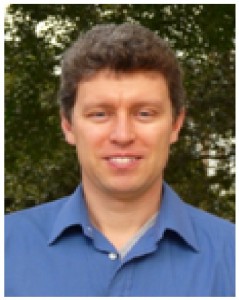 Prof. Per Zetterlund was born in Karlskoga, Sweden, in 1968. He graduated from The Royal Institute of Technology in Stockholm (Sweden) in 1994 with an M.Sc. in Chemical Engineering, and obtained his Ph.D. in the School of Chemistry at Leeds University (UK) in 1998 with Prof. A. F. Johnson in radical crosslinking polymerizations. He carried out postdoctoral research at Griffith University (Brisbane) with A/Prof. W. K. Busfield and Prof. I. D. Jenkins in nitroxide-mediated polymerization (NMP) and the use of nitroxides as radical traps. In 1999, he became Assistant Professor at Osaka City University (Japan) in the group of Prof. B. Yamada, and worked on kinetics/mechanism of high conversion radical polymerization, synthesis/polymerization of macromonomers, and NMP. In 2003, he moved to Kobe University (Japan) and joined the team of Prof. M. Okubo, where he was promoted to Associate Prof in 2005. Since 2009, he is working as Associate Prof at The Centre for Advanced Macromolecular Design (CAMD) at The University of New South Wales (Sydney, Australia).
Prof. Per Zetterlund was born in Karlskoga, Sweden, in 1968. He graduated from The Royal Institute of Technology in Stockholm (Sweden) in 1994 with an M.Sc. in Chemical Engineering, and obtained his Ph.D. in the School of Chemistry at Leeds University (UK) in 1998 with Prof. A. F. Johnson in radical crosslinking polymerizations. He carried out postdoctoral research at Griffith University (Brisbane) with A/Prof. W. K. Busfield and Prof. I. D. Jenkins in nitroxide-mediated polymerization (NMP) and the use of nitroxides as radical traps. In 1999, he became Assistant Professor at Osaka City University (Japan) in the group of Prof. B. Yamada, and worked on kinetics/mechanism of high conversion radical polymerization, synthesis/polymerization of macromonomers, and NMP. In 2003, he moved to Kobe University (Japan) and joined the team of Prof. M. Okubo, where he was promoted to Associate Prof in 2005. Since 2009, he is working as Associate Prof at The Centre for Advanced Macromolecular Design (CAMD) at The University of New South Wales (Sydney, Australia).
Current research focuses on controlled/living radical polymerization (CLRP) in aqueous and carbon dioxide based dispersed systems for synthesis of well-defined polymer and nanoparticles. Particular attention is given to how CLRP is influenced by compartmentalization (nanoreactors), and how this can be exploited to improve control/livingness.
He has published 116 peer-reviewed papers and 2 book chapters, and is a member of the IUPAC Macromolecular Division (IV) Subcommittee on Modeling of Polymerization Kinetics and Processes, The International Polymer and Colloid Group, The American Chemical Society, The Society of Polymer Science, Japan, as well as RACI.
http://www.camd.unsw.edu.au/index.php?option=com_content&view=article&id=128&Itemid=58
What was your inspiration in becoming a chemist?
I always enjoyed science (being able to explain and understand stuff) when I was at school, and I really liked my chemistry teacher in high school (thank you Mr Kerr!).
What was the motivation to write your Polymer Chemistry article (DOI: 10.1039/C2PY20434G)?
There is extensive literature on the use of microwave irradiation in polymer synthesis, but it remains to be clarified with confidence what exact effect(s), if any, the microwave irradiation has on radical polymerization. The term “microwave-assisted” polymerization is frequently used, but it is not clear exactly what this means. We carried out a number of polymerizations under microwave irradiation under different conditions, trying to clarify the situation in the case of the monomer styrene.
Why did you choose Polymer Chemistry to publish your work?
Despite Polymer Chemistry being a new journal, it has already established itself as one of the major journals in the polymer chemistry field with an impressive impact factor – we therefore thought it would be a great way to gain exposure for our work.
In which upcoming conferences may our readers meet you?
In Kobe, Japan, at The 9th SPSJ International Polymer Conference, Dec 11-14 (http://www.spsj.or.jp/IPC2012.html), and at the Australasian Polymer Symposium in Darwin (Australia) 7-10 July next year (http://www.34aps.org.au/2013/), and also at the International Polymer Colloids Group Conference in Shanghai, China, in June 2013.
How do you spend your spare times?
With my family (wife and 8 year old son), playing tennis, jogging, listening to Kiss and playing the drums.
Which profession would you choose if you were not a scientist?
Not that it is very realistic, but I think I would like to try being a professional drummer in a heavy rock band.










